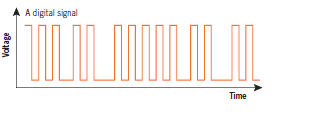Analog Systems:
When we thing of
voice systems the very first thing that comes into our mind is a home phone.
Like our home phones our old telephony systems used to operate in analog mode.
It has two cables Ring and Tip and it operates on -48 DC voltage. When the circuit
between the two gets complete it withdraws a dial tone from the central office.
The voice waveform of these kind of calls are analog waveform.
In Analog systems there are three types of circuits:
Loop Start: It is mostly used in home environments. Loop
start has a problem of glare. Glare is a problem where when you pick up the
phone for a call and at the same time someone calls you, you get connected to
the caller without getting a Ring tone. In home environment possibility of
glare is less as call flow is less.
Ground Start: In a big environment where multiple lines are
connected to a PBX, possibility of Glare becomes high as huge number for calls
are there for incoming and outgoing at the same time. In order to eliminate the
possibility of glare we use Ground Start.
E&M: Also referred as Earth and Magneto or Ear and Mouth
sometimes. It’s a kind of signaling used to connect two different PBX with an
analog line.
Digital Systems:
In digital voice
system calls from one end to another end flow in the form of 0 and 1. Multiple
voice channels are multiplexed in a single stream using Time Division Multiplexing. In TDM multiple voice streams are sent in a
single stream with a specific time slot for a very short duration and at the
other end that time slot is recovered using de-multiplexing techniques.
Digital voice
streams are converted from an analog stream using a set of process using Nyquist
theorem. As per Nyquist theorem if we want to change an analog signal to
digital signal and recover it back completely we need to sample the wave twice
the highest frequency. In Telephony word we consider frequency range from
300-4000 Hz. So as per the theorem we need to sample a wave 2 * 4000, which
makes it 8000 times per second.
Analog to Digital voice conversion process:
Sampling: 8000 samples of an Analog waveform is takes as per
Nyquist theorem.
Quantization: Each sample is converted in a numerical value
using 8 bits between -127 to +127.
Encoding: Changing the decimal value received from Encoding
to a binary value. It comes in two forms: A-Law
and (mu) u-Law (used in America).
Compression: Its an option thing that can be done to save
bandwidth while transmitting the voice.
After conversion total bandwidth for a particular call becomes:
Bandwidth per call = Total number of Samples per second* Bits per Sample
= 8000*8
=64000 bits per second or 64 Kbps.
This is how we get bandwidth for a call with no compression. We will talk about compression techniques in further posts.
PS: If you like this post please like my Facebook page Cisco Voice Virtual Lab which will help you to know about my next post on Facebook.
PS: If you like this post please like my Facebook page Cisco Voice Virtual Lab which will help you to know about my next post on Facebook.


Yoᥙr stygle iѕ verу unique compared to otheг people I have read stuff from.
ReplyDeleteThanks for posting when yоu have the opportunity, Guess I will
јust bookmark thiѕ page.